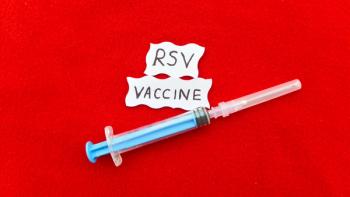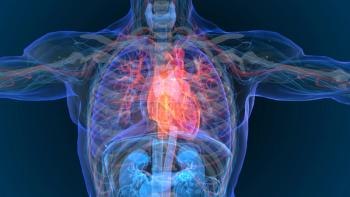
Risk of Cardiovascular Event Increases With Rising Lipoprotein(a) Levels in Patients With ASCVD
Key Takeaways
- Higher Lp(a) levels are associated with increased risk of recurrent ASCVD events, independent of demographics or LDL-C therapy use.
- Lp(a) is a causal risk factor for ASCVD through inflammation and thrombosis, with limited targeted treatments available.
With each increase in lipoprotein(a) level in patients with atherosclerotic cardiovascular disease (ASCVD), there was a corresponding increase in risk of experiencing an ASCVD event.
Higher lipoprotein(a) [Lp(a)] levels are associated with continuously increasing risk of recurrent atherosclerotic cardiovascular disease (ASCVD) events, with each increase in Lp(a) associated with an increased risk of experiencing a cardiovascular event, according to the results of the largest study conducted to date of individuals living with ASCVD with a confirmed measurement of Lp(a), which were presented at the European Atherosclerosis Society Congress and published in European Heart Journal.1,2
Lp(a) at high levels is a causal and independent risk factor for ASCVD through the inflammation and thrombosis it causes in the blood. There is a major lack of targeted treatments to lower Lp(a), despite the promising investigational therapies currently under development. Until these become available, investigators recommend using therapies indicated to lower low-density lipoprotein cholesterol (LDL-C). The investigators sought to evaluate whether higher Lp(a) levels drive a sustained and increasing risk of recurrent ASCVD events, with analyses of the impact of sex, race/ethnicity, and use of high-impact LDL-C-lowering therapy.1,3,4
Their hypothesis was that, as Lp(a) levels rise, they are associated with a subsequent continuously increasing risk of a recurrent ASCVD event regardless of demographics or use of LDL-C therapy. The authors analyzed the Family Heart Database of 273,770 individuals in the US; individuals were analyzed from 30 days post-ASCVD diagnosis until a recurrent ASCVD event as a function of higher Lp(a) levels, according to the investigators. The database, regularly updated since 2014, provides a large cohort to assess a full range of Lp(a) levels, particularly those exceeding 175 to 200 nmol/L, the authors wrote.1
Lp(a) Increases Correspond to Heightened Risk of Cardiovascular Event
The study’s primary end point was time to first occurrence of a recurrent ASCVD event during the follow-up period. Additionally, subgroup analyses were conducted for sex, race/ethnicity, and age. When analyzing patients on a range of lowest to highest Lp(a) category, investigators observed progressively higher percentages of women and Black individuals, with corresponding progressively lower percentages of men, Hispanics, and White individuals. Unsurprisingly, other possible confounders were similar according to Lp(a) levels; this was expected by the investigators, given prior literature indicating that Lp(a) levels are mostly genetically determined.1,5
Across a median follow-up period of 5.4 years, 41,687 individuals experienced a recurrent ASCVD event. Higher Lp(a) levels were associated with continuously increasing risk of a recurrent ASCVD event overall and in stratified analyses of women, men, and Black, Hispanic, and White individuals, according to the investigators. An unadjusted analysis, in addition to analyses adjusted for all covariates, found that higher Lp(a) levels in clinically relevant categories were linked to a continuously higher risk of a recurrent ASCVD event.1
Given the lack of approved Lp(a) drugs, the authors looked to understand whether a strategy of aggressive LDL-C lowering could successfully reduce Lp(a) levels and improve the risk of an ASCVD event. They conducted subgroup analyses by use of high-impact, low/moderate-impact, and no LDL-C-lowering therapy. Aligning with their hypothesis, the use of high-impact LDL-C-lowering therapy compared with no use or low/moderate-impact therapy was associated with lower adjusted hazard ratios in those with Lp(a) categories of 180 nmol/L or higher.1
Key Takeaways
These results indicate that, in patients with ASCVD and high Lp(a) levels of 180 nmol/L, the risk of having another ASCVD event was reduced using high-impact LDL-C-lowering therapies. In the absence of specifically indicated Lp(a)-lowering therapies, pharmacists should counsel patients with ASCVD on the benefits of therapy with high-dose statins or PCSK9 inhibitors to reduce their cardiovascular risk.1
“Among the many important findings in this study, we now know that in people living with cardiovascular disease, every nmol/L of Lp(a) confers increased risk of a subsequent cardiovascular event. This is a meaningful advancement in our understanding of the impact of Lp(a) on one’s health,” Diane MacDougall, vice president of science and research at the Family Heart Foundation and first author of the trial, said.2
“The US has lagged behind many other countries in recommending that adults complete a simple blood test to measure Lp(a),” Katherine Wilemon, founder and CEO of the Family Heart Foundation, explained. “This study strongly confirms the importance of considering Lp(a) levels among other risk factors when determining an individual's risk of future heart attacks and strokes.”2
REFERENCES
1. MacDougall DE, Tybjærg-Hansen A, Knowles JW, et al. Lipoprotein(a) and recurrent atherosclerotic cardiovascular events: the US Family Heart Database. Euro Heart Journ. 2025:ehaf297. doi:10.1093/eurheartj/ehaf297
2. Family Heart Foundation. Family Heart Foundation announces results of real-world study in 273,770 individuals with cardiovascular disease demonstrating that risk of subsequent cardiovascular event increases with rising lipoprotein(a) levels. EurekAlert!. News Release. Released May 7, 2025. Accessed May 22, 2025. https://www.eurekalert.org/news-releases/1082940
3. Retes-Soffer G, Ginsberg HN, Berglund L, et al. Lipoprotein(a): A genetically determined, causal, and prevalent risk factor for atherosclerotic cardiovascular disease: A scientific statement from the American Heart Association. AHA/ASA Journals. 2021;42(1). doi:10.1161/ATV.0000000000000147
4. Koschinsky ML, Bajaj A, Boffa MB, et al. A focused update to the 2019 NLA scientific statement on use of lipoprotein(a) in clinical practice. Journ Clin Lipid. 2024;18(3):E308-E319. doi:10.1016/j.jacl.2024.03.001
5. Kronenberg F, Mora S, Stroes ESG, et al. Lipoprotein(a) in atherosclerotic cardiovascular disease and aortic stenosis: a European Atherosclerosis Society consensus statement. Euro Heart Journ. 2022;39(14):3925-3946. doi:10.1093/eurheartj/ehac361
Newsletter
Stay informed on drug updates, treatment guidelines, and pharmacy practice trends—subscribe to Pharmacy Times for weekly clinical insights.




















































































































































































































